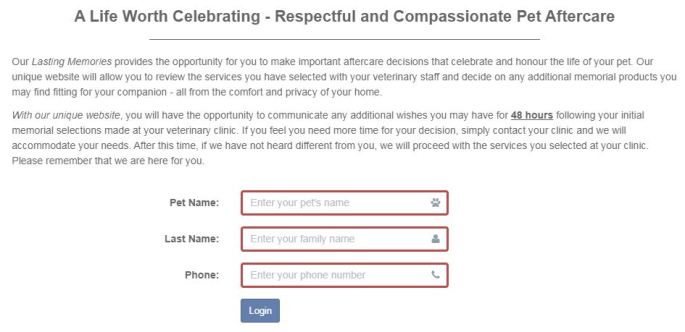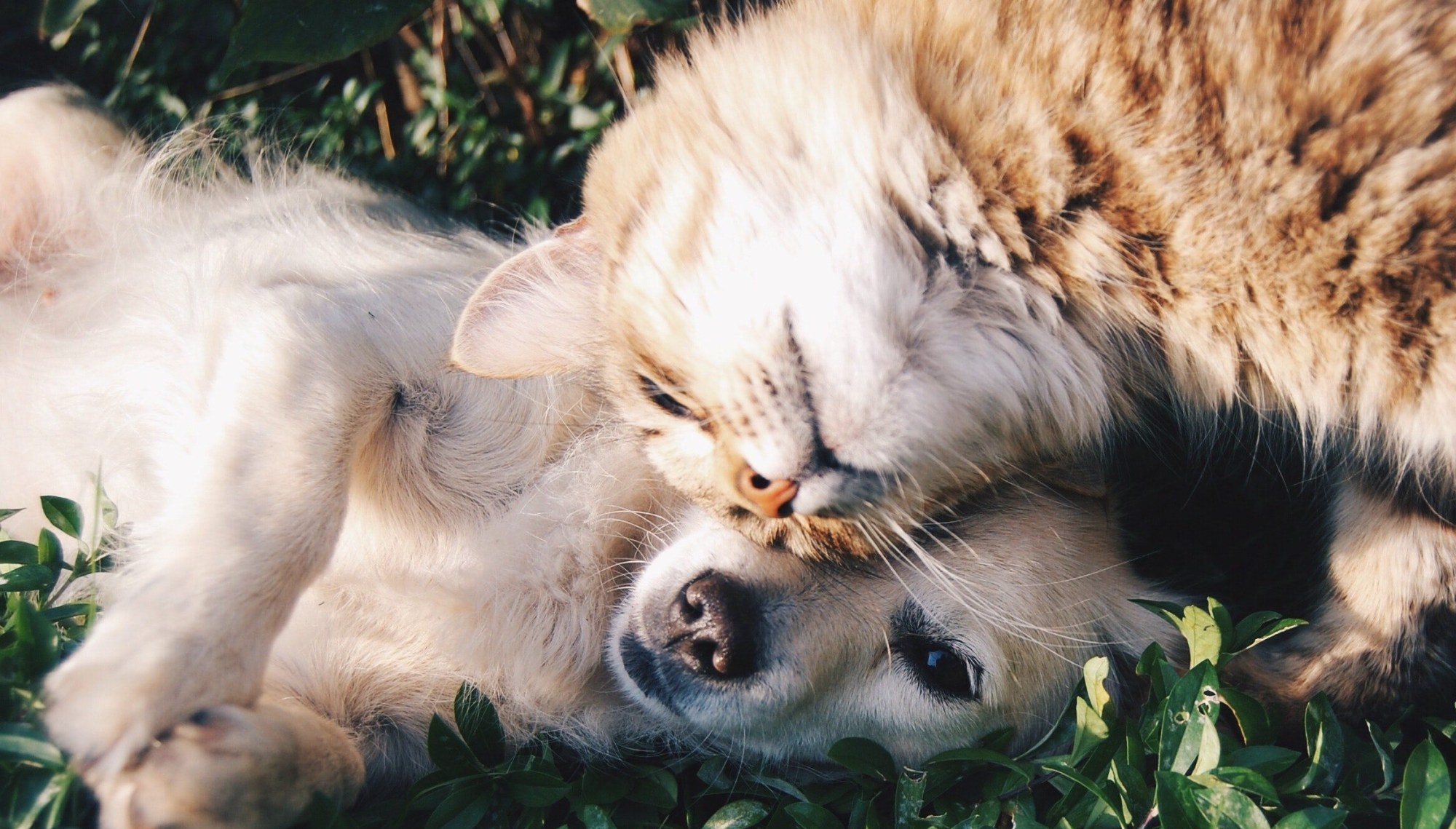Saying goodbye to your furry family member is never easy. Our goal is to encourage discussion about geriatric and palliative care, so that we may ease your pet into a happy old age and eventually help pet owners with the end of life decision. Here are a few commonly asked questions regarding geriatric pets:
What are signs of aging?
Did you know? Starting at the age of 7, your pet is considered a senior.
While your pet may seem young at heart, there are some signs that may indicate that your pet is aging. Some of these changes may include:
- Having less energy
- A change in habits (including play preferences, eating, drinking, or grooming)
- Dental problems or bad breath
- Longer and more frequent naps
- Weight loss (in particular muscle loss)
- A change in coat texture and colour
- Changing senses (hearing, vision, taste, or smell)
- Altered behaviours such as house soiling, abnormal sleep cycle, pacing, vocalizing
If you observe these or other signs in your pet, it may be time to consult your veterinarian and make some changes in your pet’s life.
If I notice signs of aging in my pet, what can I do?
Age is not a disease, however if your pet is starting to show signs of aging, there are multiple ways to help your pet age gracefully.
Many people associate sleeping more, having mobility issues, bad breath, or a rough hair coat as normal age related changes. However, this is not always the case. These changes may be associated with organ dysfunction, arthritis, severe dental disease, or other conditions. Once these conditions are diagnosed by your veterinarian, we can often make recommendations to make your pet more comfortable in their senior years.
Regular visits with your veterinarian and a thorough physical exam can help pick up early changes in your pet’s health. In addition to an exam and vaccines, your veterinarian may recommend preventative blood work, urinalysis, radiographs, or other tests to help advise you on more individualized care. Diagnostic tests can help pick up internal changes (like organ function), that you may not be able to see just by looking at your pet.
In general, here are some helpful tips for senior wellness:
- Stimulation: senior animals need a balance of physical and social activity, mental stimulation, and rest to remain healthy. Try new toys or training challenges to help exercise their brain!
- Adapt: older pets may suffer from joint pain or arthritis, so they may appreciate having steps to help them up onto the bed or into the car, arranging lower pieces of furniture or lower litter boxes for cats, specially designed harnesses or wheelchairs, or placing mats on slippery floors!
- Comfort: ensure senior pets have something soft and comfy for resting.
- Safety: senior pets may have difficulty moving, seeing, or hearing, so check your home/yard for potential hazards. Also be vigilant when children and pets are together – senior pets may be more sensitive and less patient!
- Nutrition and weight: a balanced diet and regular exercise are vital for your pet. Your senior pet may have different dietary needs compared to when they were young. Some diets are designed for specific issues e.g. joints, dementia, urinary issues, weight maintenance, and more. Every animal is different so consult with your veterinarian for diet and exercise recommendations!
- Medications and supplements: there are hundreds of products out there, so ask your veterinarian which medications or supplements may benefit your pet!
How can I tell if my pet has good quality of life?
You know your pet best. If you are noticing a decline in their habits despite preventative care, it may be time to have a quality of life discussion with your veterinarian. The chart below is helpful to determine the success of palliative care. By using the scale often (e.g. daily, weekly, or monthly), it is best used as a tool to trend quality of life. 
When is it time to discuss euthanasia?
The scoring system is a nice way to help family members and veterinary teams assess a pet’s quality of life, however it is not foolproof.
If your pet is consistently scoring low on the quality of life scale or if you feel that your pet is in pain or suffering despite best efforts, it may be time to discuss humane euthanasia options with your veterinarian.
Making the decision to euthanize a pet can be a very difficult process. Our goal is to help pet owners in their journey to make that decision, as euthanasia can provide a peaceful and painless passing for their beloved pet.
How do we say goodbye?
We wish our pets could live forever, but as advocates for our pets we are responsible for being part of their end of life decisions. Euthanasia allows our pets to have a peaceful and pain free end of life surrounded by loved ones.
If it may be time to consider euthanasia for your pet, there are some important questions to consider. Who would like to be present to say goodbye to your pet? How would you like to memorialize your pet – cremation, paw print, burial? Where will the euthanasia take place?
For our clients at Norwich Veterinary Service, we offer euthanasia in our comfort room or we can come to your home. We often give pets mild sedation, which helps to reduce any nervousness and make them more comfortable. When we are ready to say our final goodbye, your pet’s veterinarian will give a medication that will provide a peaceful passing.

The day you say your final goodbyes, the focus should be on the bond you share with your pet. Some clients prefer to review their aftercare options before saying their final goodbyes. Gateway is the company that provides aftercare services. Their website allows clients to review their options to memorialize their pets.
If some families need more time to make aftercare decisions after saying goodbye, Gateway has a program called Lasting Memories, where pet owners can log in online to browse memorial products.

Gateway offers 2 types of cremation services:
- Regular cremation: your pet is gently placed into the crematory together with other pets. The communal remains are collected for interment in a communal burial lot at one of Gateway’s pet cemeteries.
- Private cremation: your pet will be the only pet in the cremation chamber during the cremation process. When the cremation process is complete, we ensure that you receive only the cremated remains of your pet. Our private cremation fee includes one of five complimentary urns with a simple engraving.
Gateway also offers a large selection of memorial products, including paw prints, jewelry, and more. You can browse their selection at:
https://ontario.gatewaypetmemorial.com/memorial-products/

